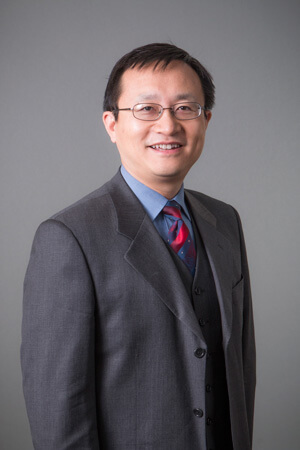Making Flat Things Grow
Growing up, the closest Yong Chen ever came to practicing the art of origami was folding notebook pages into paper airplanes gliding through the skies of his native China. Today, the associate professor of industrial and systems engineering at USC’s Viterbi School of Engineering is at the forefront of innovative research that’s distantly related. Its aim: transforming the principles of that ancient Asian art form into a basis for improved manufacturing.
“Some of it is pretty amazing,” the 43-year-old professor said.
It’s unlikely that this is what the original purveyors of origami had in mind. Back in 17th century Japan, it was all about folding flat pieces of paper into beautiful and intricate sculptures. It’s still about that for today’s origami practitioners who produce artistic creations from elegant birds to delicate flowers.
Enter 3-D printing, a modern method to create solid three-dimensional objects from digital files. It starts with a virtual two-dimensional design. Then, using an additive process that lays down successive layers of material, a 3-D model is created.
 Chen first got interested in 3-D printing while working on his Ph.D. at Georgia Institute of Technology in 1998. More recently, at a 2012 engineering conference in Chicago, he heard about something even more intriguing; applying the principles of origami to the process in creating new and enhanced methods of manufacturing.
Chen first got interested in 3-D printing while working on his Ph.D. at Georgia Institute of Technology in 1998. More recently, at a 2012 engineering conference in Chicago, he heard about something even more intriguing; applying the principles of origami to the process in creating new and enhanced methods of manufacturing.
“Potentially it’s faster, less expensive and more efficient,” the professor said. “We call it targeted folding.”
The idea is to start with a flat sheet of material such as plastic or metal. Then, using the principles of origami, a design is created placing strategic lines on it that, when folded, will create the desired three-dimensional product. Another material with a different shrinkage when heated is then placed on the lines. And when the entire sheet is heated, voila! – It bends into its pre-determined three-dimensional shape.
The method is especially useful, according to Chen, in fabricating electric circuits that can be easily and cheaply designed in two dimensions. Then, at the proper time, they can be expanded into three-dimensional objects fitting the internal shape of the products in which they are inserted. In that way, Chen said, design and production costs can be minimized while efficiency is enhanced.
Other products potentially made this way, he said, include lamps, speakers and even some instruments such as microscopes. “The beauty of it,” Chen said, “is that you can make one piece and change it into whatever shape you want.”
Chen’s research is aided by a collaborator, Professor Charlie Wang at Chinese University of Hong Kong, as well as graduate and post-graduate students at USC. “The project is exciting,” said Tom Kwok, 27, a post-doctoral student at USC Viterbi who’s been involved for one year. “Working with Dr. Chen is great; he gives me lots of freedom and provides good support.”
Dongping Deng, a 26-year-old Ph.D. candidate, agrees. “The professor’s very easygoing,” he said. “He gives lots of detailed advice.”
Both students say they have dabbled in origami themselves: Kwok to make flowers for his girlfriend and Deng as a hobbyist in childhood. Only Chen speaks of making paper airplanes.
It happened in Guiyang, the mountainous Chinese provincial capital where Chen grew up. Inspired by his father, a mechanical engineer, he had engineering in his blood. So after earning bachelor’s and master’s degrees in mechanical engineering in China, he immigrated to the U.S. to pursue a doctorate and, nine years ago, came to USC.
Today he lives in La Cañada Flintridge, Calif., with his wife and two daughters, ages 7 and 10. These days, Chen says, he’s too busy to pursue his former passions of basketball and tennis. And though he tries to work out regularly, he often doesn’t make it.
That’s because he spends most of his time on campus thinking about new ways of product design and manufacturing. Chen’s ambition for the origami project: “Hopefully one day our work will fill two pages of a textbook.”



